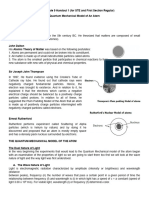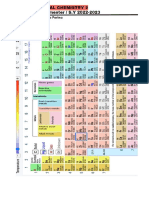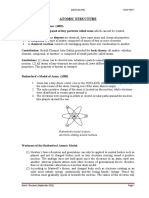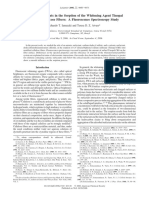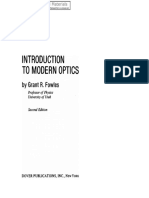0% found this document useful (0 votes)
27 views4 pagesAtomic Structure
The document outlines the discovery of subatomic particles, including electrons, protons, and neutrons, and discusses various atomic models such as Thomson's and Rutherford's. It highlights the limitations of classical mechanics and introduces Bohr's model, which incorporates quantum theory to explain atomic behavior. The document concludes with the quantum mechanical model, detailing the wave-particle duality of matter and the characteristics of atomic orbitals.
Uploaded by
yishaan4Copyright
© © All Rights Reserved
We take content rights seriously. If you suspect this is your content, claim it here.
Available Formats
Download as DOCX, PDF, TXT or read online on Scribd
0% found this document useful (0 votes)
27 views4 pagesAtomic Structure
The document outlines the discovery of subatomic particles, including electrons, protons, and neutrons, and discusses various atomic models such as Thomson's and Rutherford's. It highlights the limitations of classical mechanics and introduces Bohr's model, which incorporates quantum theory to explain atomic behavior. The document concludes with the quantum mechanical model, detailing the wave-particle duality of matter and the characteristics of atomic orbitals.
Uploaded by
yishaan4Copyright
© © All Rights Reserved
We take content rights seriously. If you suspect this is your content, claim it here.
Available Formats
Download as DOCX, PDF, TXT or read online on Scribd
/ 4







